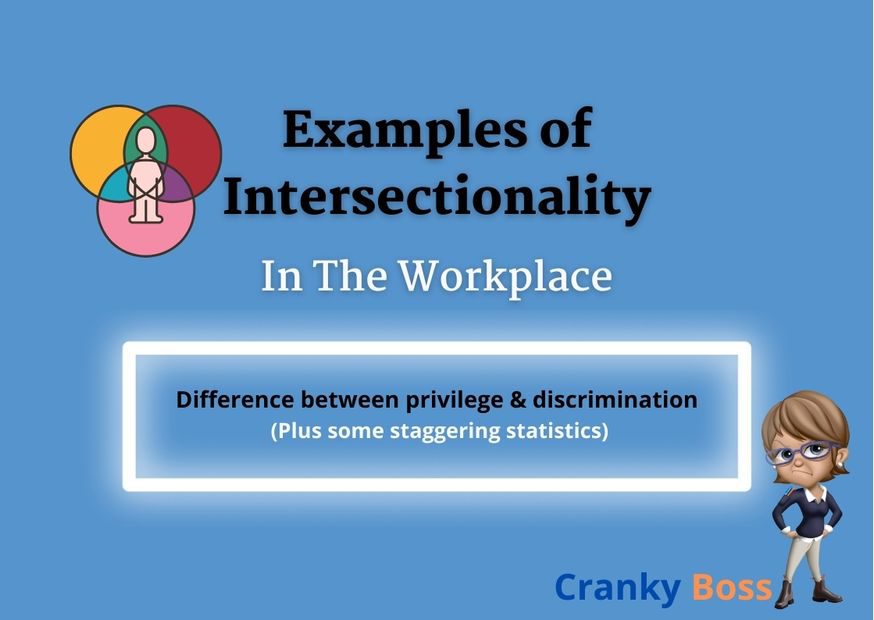Diversity is a reality that reflects the varied backgrounds, experiences, and identities of employees. One crucial aspect of diversity that often gets overlooked is intersectionality.
Intersectionality recognizes that individuals may experience multiple layers of discrimination or privilege based on various aspects of their identity, such as race, gender, ethnicity, religion, disability, sexual orientation, to name a few.
In the USA the US Department of Labor tells us that women are paid 0.83cents to every dollar paid to men. To throw a spanner in the works, it goes on to say that women of colour were paid even less!
Black women were paid 64% and Hispanic women were paid 57% of what white non-hispanic men were paid.
🫢That astounding!
What’s the difference between privilege and discrimination though?
Privilege
Privilege refers to the unearned advantages or benefits that individuals may enjoy based on certain aspects of their identity, such as race, gender, socio-economic status, or other social categories.
Example: In the context of the workplace, a white, male, able-bodied person may experience privilege, resulting in opportunities like higher pay, easier career advancement, or fewer instances of systemic bias.
Discrimination
Discrimination is the unjust or prejudicial treatment of individuals based on certain characteristics, leading to disadvantages or unequal opportunities.
Example: In contrast, someone who faces discrimination may encounter barriers to career progression, lower pay, or exclusionary practices due to factors like race, gender, disability, or other protected characteristics.
In summary, privilege involves the advantages one receives without necessarily earning them, often due to societal biases, while discrimination involves unfair treatment and disadvantages based on certain aspects of one’s identity. The concepts are interconnected within the framework of intersectionality, where individuals may experience both privilege and discrimination simultaneously, depending on the various layers of their identity.
The Concept of Intersectionality
The concept of intersectionality emphasizes the idea of an overlap or intersection of various social categories and identities. It acknowledges that individuals are not defined by a single characteristic but by the interplay of multiple factors. This overlapping nature is crucial to understanding the complexity of people’s experiences and challenges.

Let’s look at the importance of intersectionality in the workplace and how it contributes to creating an inclusive and fair and equal workplace for all employees.
Understanding Intersectionality:
Intersectionality goes beyond acknowledging individual differences; it recognizes that these differences can intersect or overlap, creating unique and complex experiences for individuals. For instance, a woman of colour may face challenges that are different from those of a white woman or a man of colour. Acknowledging these intersections is essential for fostering a workplace that values and respects the diverse identities of its employees.
Promoting Inclusivity:
One of the key benefits of understanding intersectionality in the workplace is the promotion of inclusivity. When employers recognize and appreciate the diverse experiences of their workforce, they can create policies and practices that cater to the specific needs of different groups. This inclusivity not only boosts employee morale but also enhances productivity and creativity by harnessing a range of perspectives. It is crucial in motivating employees.
Addressing Bias and Stereotypes:
An awareness of intersectionality helps in identifying and addressing biases and stereotypes that may exist within the workplace. Stereotyping individuals based on a single aspect of their identity can lead to discrimination and exclusion. By embracing intersectionality, employers can work towards eliminating these confirmation biases and fostering an environment where all employees are treated fairly, regardless of their unique identities.
Having social awareness and empathy are absolute key in leadership. In fact it is my view that emotional intelligence is equally valuable to academic distinctions.
Equal Opportunities for Career Advancement:
Intersectionality plays a crucial role in ensuring equal opportunities for career advancement. Recognizing the challenges faced by individuals with intersecting identities enables organizations to implement fair promotion processes. This not only benefits employees but also contributes to a more diverse leadership team, which can lead to better decision-making and a more inclusive workplace culture.
Creating a Supportive Environment:
Understanding intersectionality is fundamental to creating a supportive environment for employees. This involves providing resources and support systems that cater to the diverse needs of the workforce. For example, offering flexible work arrangements, mentoring programs, and employee resource groups can help address the specific challenges faced by different groups within the organization.
Challenges and Opportunities:
While acknowledging the importance of intersectionality, it’s crucial to recognize that implementing inclusive practices may come with challenges. Resistance to change, lack of awareness, and unconscious biases can hinder progress. However, these challenges also present opportunities for growth and learning. Organizations that actively engage in addressing these challenges are better positioned to create a workplace that truly values diversity and inclusion.
Examples of intersectionality in the workplace:
Gender and Race
A woman of color may experience challenges that are distinct from those faced by a white woman or a man of color. She might encounter gender-based discrimination as well as racial biases, making her experience at work uniquely complex.
Sexual Orientation and Disability:
An employee who identifies as LGBTQ+ and also has a disability may face a dual challenge. They might encounter prejudice related to their sexual orientation while also dealing with perceptions or misconceptions related to their disability, creating a need for a workplace that accommodates and understands both aspects.
Age and Gender:
A younger woman and an older woman may have different workplace experiences. The younger woman might face age-related biases, while the older woman might encounter gender-related challenges. Recognizing and addressing both age and gender dynamics is essential for creating an inclusive workplace for women of all ages.
Religion and Gender:
A religious woman may face discrimination based on both her gender and religious beliefs. She might encounter challenges related to wearing religious attire while also navigating gender-based expectations. An inclusive workplace should respect and accommodate various religious and gender identities.
Socioeconomic Status and Education:
An employee from a lower socioeconomic background with a high level of education may face challenges different from those with a similar educational background but from a more privileged socioeconomic status. Acknowledging and addressing these class-related differences is crucial for promoting equality and understanding diverse perspectives.
Parental Status and Gender:
A working father and a working mother may experience different expectations and challenges related to their parental roles. A workplace that recognizes and supports both men and women in their caregiving responsibilities fosters a more inclusive environment.
Nationality and Language:
Employees from the same nationality may have different language abilities. An organization that values diversity should accommodate various language proficiencies and create an inclusive environment that considers language barriers and differences.
These examples highlight how intersectionality is not about focusing on a single aspect of an individual’s identity but understanding the multifaceted nature of their experiences. By recognizing and addressing these intersections, workplaces can strive to create environments where every employee feels valued and supported.
Summary
In conclusion, embracing intersectionality in the workplace is not just a moral imperative but a strategic move for organizations aiming to thrive in a diverse world. By understanding and appreciating the intersecting identities of their employees, employers can create an inclusive and supportive environment that fosters individual growth and organizational success. It is through affiliative leadership that workplaces can truly reflect the richness of the diverse talents and experience.

